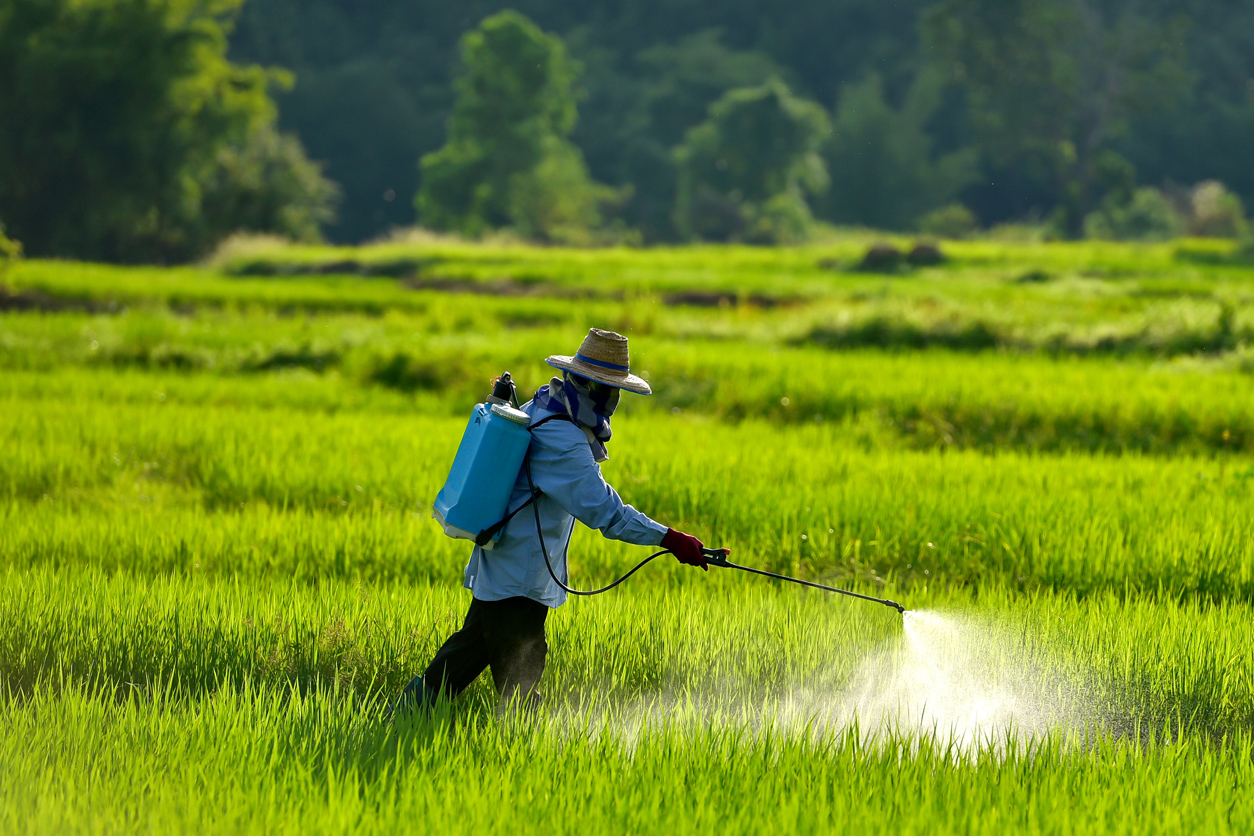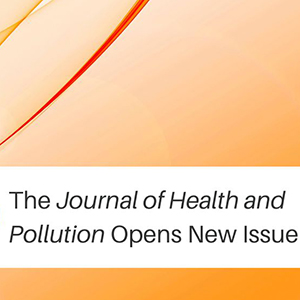Thai farmers are more likely to display health symptoms and biological signs of pesticide poisoning during the active rice farming period compared to the non-active farming period, according to NIEHS-funded research. The study was published on Jan. 11 in Scientific Reports.
 The U.S. Environmental Protection Agency offers information about the potential health effects of exposure to pesticides. (Photo courtesy of Sirisak_baokaew / Shutterstock.com)
The U.S. Environmental Protection Agency offers information about the potential health effects of exposure to pesticides. (Photo courtesy of Sirisak_baokaew / Shutterstock.com)“The majority of farmers in this study reported that they had at least one health symptom associated with pesticide intoxication,” said study author Dana Barr, Ph.D., from Emory University. “This investigation can be used to promote safer use of pesticides among farmers and mitigate exposure among residents living near a rice field. The findings will be critical for establishing and launching several preventive programs in the future.”
Pesticides are a global threat
Pesticides are widely used in the agricultural sector to protect plants from insects and increase productivity. Occupational exposure has been linked to wide-ranging negative effects on human health, even at low levels. Pesticide poisoning is a common phenomenon in developing countries.
“Because many cases of poisoning go unreported, pesticide exposures constitute a more serious health threat than recognized,” said study author Parinya Panuwet, Ph.D., from Emory University. “Improper handling of pesticides contributes greatly to severe acute poisoning and chronic health effects on multiple systems, such as respiratory, endocrine, gastrointestinal, neurological, and reproductive systems.”
The most common types of pesticides used in crop protection are highly toxic to humans. Upon entering the body, they exert their harmful effects in part by inhibiting the activity of acetylcholinesterase (AChE) and butyrylcholinesterase (BuChE), which are essential enzymes for numerous functions in the nervous system.
“A change in cholinesterase enzyme activity can be used as a biomarker of pesticide exposure and may be used to inform adverse clinical health problems,” Barr said. “We conducted this study to evaluate the farmer health effects of occupational pesticide exposure and to evaluate cholinesterase activities during non-active and active rice farming periods.”
Tracking the problem may offer protection
A geographic information system (GIS) used in conjunction with global positioning systems can provide opportunities to collect data on agricultural pesticide exposure and visualize a poisoning pattern within a specific area. In the new study, the researchers evaluated the impact of pesticide exposure on farmer health and used GIS mapping to overlay the change in cholinesterase activities observed from 58 farmers in Phimai District, Nakhon Ratchasima Province, Thailand.
 Panuwet works with Barr in the Laboratory for Exposure Assessment and Development in Environmental Research. (Photo courtesy of Parinya Panuwet)
Panuwet works with Barr in the Laboratory for Exposure Assessment and Development in Environmental Research. (Photo courtesy of Parinya Panuwet)During the active rice farming period, more than half of the farmers experienced symptoms such as muscle fatigue, blurred vision, sweating, shortness of breath, and dizziness. By contrast, less than one-third of farmers reported health problems during the non-active rice farming period.
In addition, farmers had lower AChE and BuChE activity in their blood samples during the active rice farming period compared to the non-active rice farming period. GIS mapping showed that cases with low AChE and BuChE activity were dispersed across the farming areas and also appeared in residential areas.
“GIS can assist public health officials with planning and management of pesticide-exposure reduction programs, and lead to more efficient decision-making,” Panuwet said. “For example, our work can be used to assist the establishment of a pesticide application-free zone to minimize exposures in residential areas.”
Panuwet noted that the latest study is part of a long-term collaboration with scientists from Rutgers University and Chulalongkorn University. He thanked lead author Ekarat Sombatsawat, Ph.D., and Wattasit Siriwong, Ph.D., who led the field observations in Thailand.
Citation: Sombatsawat E, Barr DB, Panuwet P, Robson MG, Siriwong W. 2022. Pesticide toxicity assessment and geographic information system (GIS) application in small-scale rice farming operations, Thailand. Sci Rep. 12(1):499.
(Janelle Weaver, Ph.D., is a contract writer for the NIEHS Office of Communications and Public Liaison.)










